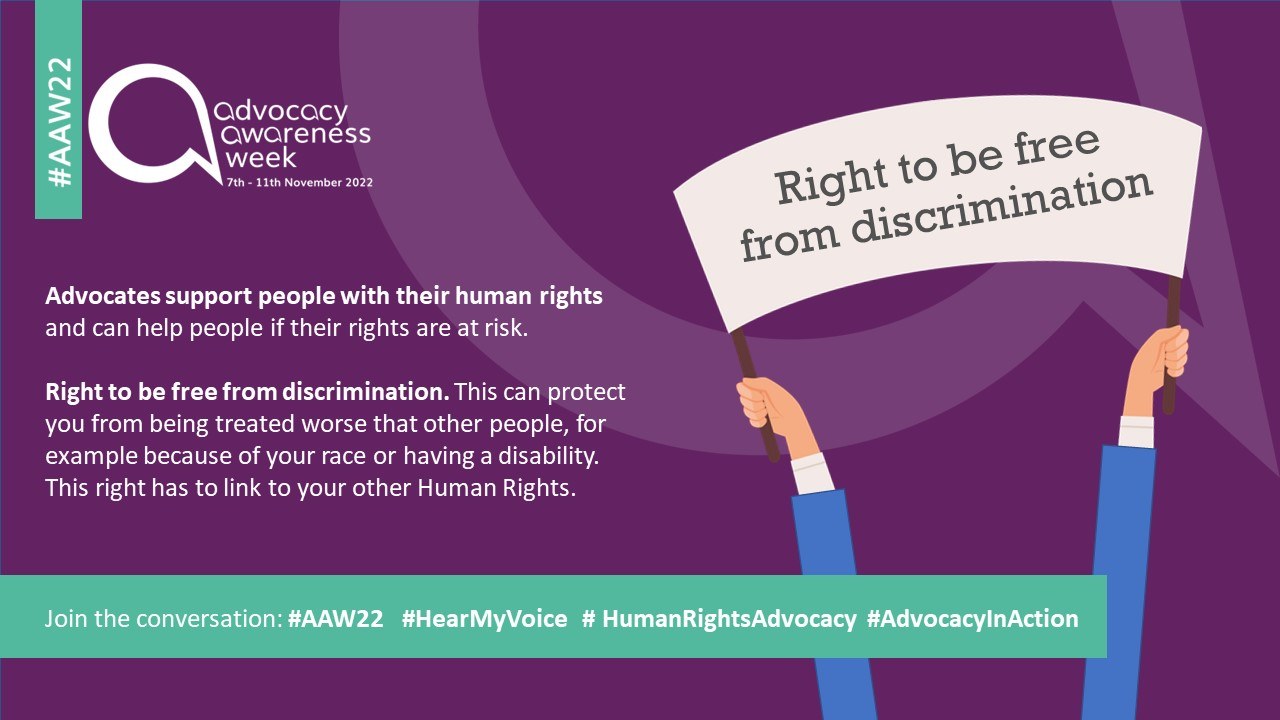Blog: Human rights and equality; moving from inclusion and cultural competency to tackling structural discrimination
Jacqui Jobson is an NDTi Associate and QPM assessor. In this short blog for Advocacy Awareness Week she explains how Article 14 of the Human Rights Act, the right to be free from discrimination, should play a key part in any advocate's toolkit.

When using the Human Rights Act as part of an advocate’s tool kit, it is crucial that advocates are aware of Article 14, which protects our right to be free from discrimination. Article 14 can be used when a person’s human rights are at risk and there is also an element of discrimination; it needs to be linked to one of the other 16 human rights, this is often called a “piggy- back right”. The British Institute Human Rights (BIHR) have excellent resources regarding the right to be free from discrimination which can be found here https://www.bihr.org.uk/the-right-to-be-free-from-discrimination
It’s worth knowing that Article 14 is broader than the nine protected characteristics of the Equalities Act (age, disability, gender, reassignment, marriage and civil partnership, pregnancy and maternity, race, religion or belief, sex, sexual orientation) as it includes a category called “other status” and this could be used, for example when there is discrimination because of gender identity, health, parental or immigration status.
Advocates can use the human rights act when taking action to support the rights of a person when they are being treated less favourably than others in the same situation based on their characteristic, status or identity in the public sector. On the other hand, we may also be supporting someone when a statutory body is failing to treat you differently when you may be in a different situation from others or applying blanket rules that make you worse off.
The BIHR gives some really good examples of this in health and care such as:
- a person not having their physical health problem treated because they have a mental health problem or learning disability
- making decisions about where or who a person should live with based on discriminatory attitudes
- a person being denied a right to marry purely because they have a disability
Often, we come across professionals who give reasons for treating someone differently. An advocate’s role is to be able to use Human Rights law to ask questions about these decisions or actions and challenge whether they are “objectively and reasonably justified”.
But what do advocates need to know about this right and how can we use it to strengthen our approach to challenging structural discrimination through systemic advocacy?
Structural or institutional discrimination is when the rules, common behaviour and attitudes in institutions (including public sector organisations) create obstacles to groups or individuals in having the same rights and opportunities as the majority of people. This type of discrimination is sometimes intentional but often it is as a result of unintended consequences. We know that large organisations in the public sector have a long way to go to tackle institutional discrimination such as racism and homophobia; this can also apply within our own advocacy organisations. We must always look to ourselves to make sure we are upholding the very standards we are challenging others to adhere to.
Challenging unreasonable DNAR’s put in place during the pandemic is an example of where advocacy organisations were able to use their combined intelligence of what was happening on the ground to make sure that discriminatory blanket approaches were stopped.
We need to continue to use our collective power to gather and action on trends in advocacy and to make sure that we are challenging public authorities when they are making decisions that unfairly affect the human rights of those we advocate for at a system and policy level.
We have made some good progress in this area in the last few years and we need to continue use our ability to “speak truth to power” in the new normal of a post-covid world.
I feel optimistic we can do this. As an advocacy sector, we have started to examine our own part in structural discrimination and how we can improve our advocacy service to those communities that are minoritised. We’ve also started to learn from each other about how we can improve how our advocacy organisations run, looking through an Equity and Diversity lens.
But, and it is a big but, there is still a long way to go. We know that some of the advocacy we provide is just not good enough. We know in practice that as financial resources become tighter, we can sometimes collude with the system and provide a level of advocacy that does not always match our values. We need to get our own act together and we need to have the bravery and organisational support to challenge others not just on an individual level but also at an institutional and structural level if we are to affect real change and make a difference to those who are most marginalised.
